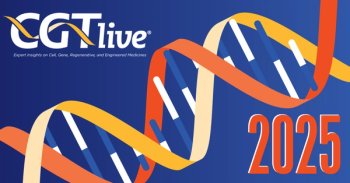
Early Research Signals Potential for CAR T-Cell Therapy in EGFRvIII-Positive GBM
A pilot study of the efficacy of CAR T-cell therapy in patients with EGFRvIII-positive glioblastoma multiforme (GBM) has generated encouraging findings.
Donald M. O'Rourke, MD
A novel chimeric antigen receptor (CAR)—modified T-cell therapy for patients with EGFRvIII-positive glioblastoma multiforme (GBM) has generated encouraging findings in a pilot study, according to a presentation at the 2015 Society of Neuro-Oncology (SNO) Annual Meeting.
Overall, the pilot study uncovered that screening for EGFRvIII was feasible for patients with GBM, as was manufacturing the EGFRvIII-directed CAR T cell therapy. The agent was shown to be safe, although there was a risk for seizures that appeared to be ameliorated by antiepileptic medications. Additionally, at this point, there has not been any EGFR wild type—directed toxicity in 8 of 8 patients.
“These findings are consistent with targeted recruitment and activation of EGFRvIII CAR cells to GBM within a week following infusion, and this has implications for how we will use this therapy in the future,” said lead investigator Donald M. O’Rourke, MD, from the University of Pennsylvania. “We’ve established, we believe, the mechanism of action. CART-EGFRvIII cells expand in the blood and traffic to the brain; they’re detectable in brain tumors of 3 of 5 patients, and we’ve seen near complete antigen loss in 4 of 5 operative patients.”
CAR T-cell therapies directed to the CD19 antigen have shown exciting promise for patients with hematologic malignancies, where they have demonstrated impressive efficacy in both chronic lymphocytic leukemia (CLL) and acute lymphoblastic leukemia (ALL).
Durable remissions were seen with a single infusion in initial studies assessing CTL019, a CD19-targeted CAR T-cell therapy, in 3 patients with late-stage, incurable CLL. The overall response rate was 57% in mature data from 14 heavily pretreated patients with CLL, which included 4 complete remissions and 4 partial remissions.1
In ALL, where CTL019 was administered to children and adults, the complete remission rate was 90%.2 These findings culminated in a breakthrough therapy designation from the FDA.
Building on the success seen with these therapies for hematologic malignancies, several studies are ongoing to assess CAR T-cell therapies in solid tumors, including the pilot study for those with EGFRvIII-positive GBM. Whether these novel therapies will prove as effective in solid cancers remains an open question.
The ongoing pilot study’s primary objective is safety and feasibility. Overall survival and progression-free survival at 1, 6, 12, and 24 months are secondary objectives (NCT02209376). Eight patients have been accrued to the study. Surgery was performed on 5 of the 8 patients, which were the focus of the talk by O’Rourke, who stressed that these are “very difficult, refractory patients. All of them have multifocal disease, and most of them have had a number of treatments.”
The therapy has been well tolerated, said O’Rourke. “Two patients did get treated with siltuximab, one for edema and the other for a seizure,” he said, adding that the IL-6 blockade was very effective in these patients.
“These were the only major toxicities, which is an important point. The seizure was grade 3, and the edema was grade 4, but transient, and quickly reversed with steroids and a single dose of the IL-6 blockade,” added O’Rourke.
One patient emerged as an internal control, O’Rourke explained, because unlike the other patients in the cohort, this patient did not exhibit CAR expansion in the blood, and CAR sequences were detected in the brain, “this patient, for whatever reason, did not engraft peripherally. The kinetics were different, and we did not detect any subsequent EGFRvIII loss in the tumor specimen.”
The other patients, however, have shown varying degrees of clinical stability. At this point, the kinetics of T-cell engraftment peripherally mirrored the experience seen with CD19-targeted CAR T-cell therapies.
Overall, a peak in T-cell engraftment was observed by day 7 following treatment. In those treated with surgery, 80% experienced a significant reduction in EGFRvIII levels following treatment with the CAR T-cell therapy. In 3 of the 5 patients, there was a near complete elimination of EGFRvIII observed.
The therapy did not disrupt other mutations, such as PI3K, or EGFR wild-type, suggesting that “this is a very selective T-cell killer,” O’Rourke said.
There were indications that some of the activated EGFR alleles, which were coexpressed in these tumors before CAR-T cells, disappeared in addition to the vIII. “Potentially, although speculative, the therapy may be able to clear some of the other EGFR mutations that coexist with vIII, and we’re exploring that now,” O’Rourke noted.
Immunohistochemistry studies showed induction of new T-cell infiltrates in tumor resection specimens, a finding that suggests antigenic spreading of bystander cells. “We may need additional strategies to target other antigens beyond EGFRvIII to prevent tumor escape," O’Rourke said.
References:
- Porter DL, Hwang WT, Frey NV, et al. Chimeric antigen receptor T cells persist and induce sustained remissions in relapsed refractory chronic lymphocytic leukemia. Sci Transl Med. 2015; doi: 10.1126/scitranslmed.aac5415.
- 2. Maude SL, Frey N, Shaw PA, et al. Chimeric antigen receptor T cells for sustained remissions in leukemia. N Engl J Med. 2014;371(16):1507-1517.
<<<
Newsletter
Stay at the forefront of cutting-edge science with CGT—your direct line to expert insights, breakthrough data, and real-time coverage of the latest advancements in cell and gene therapy.




